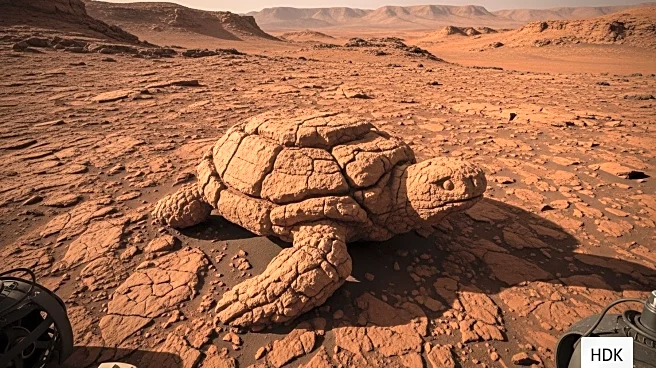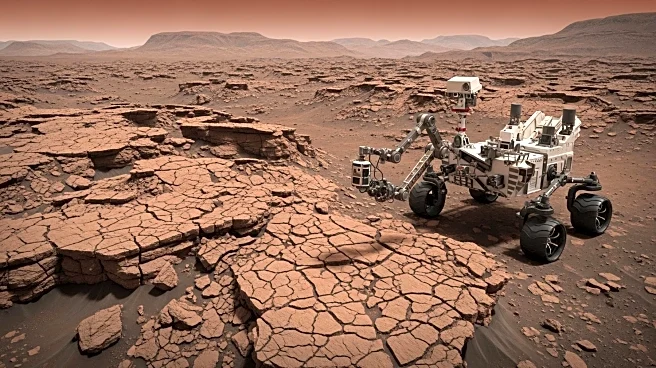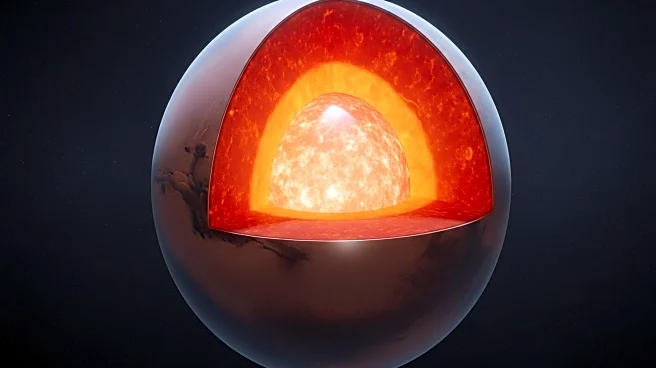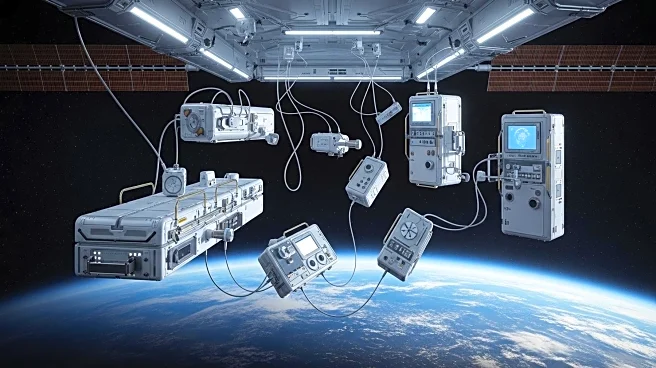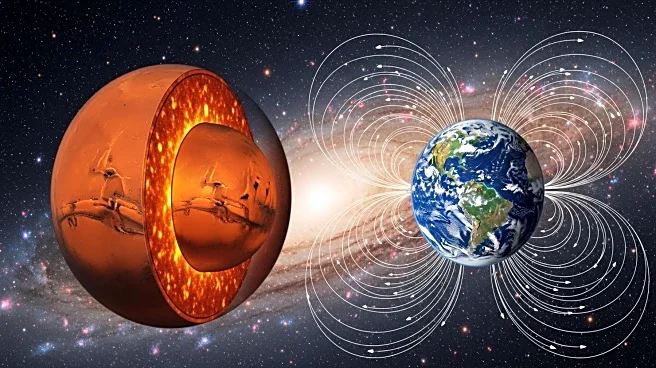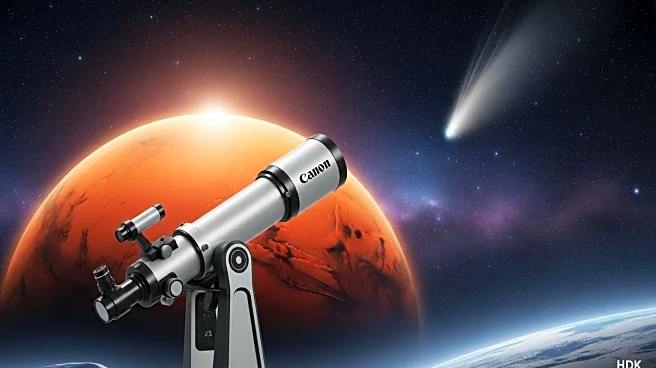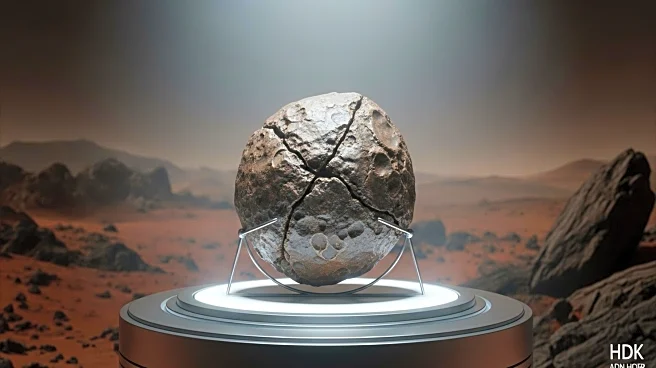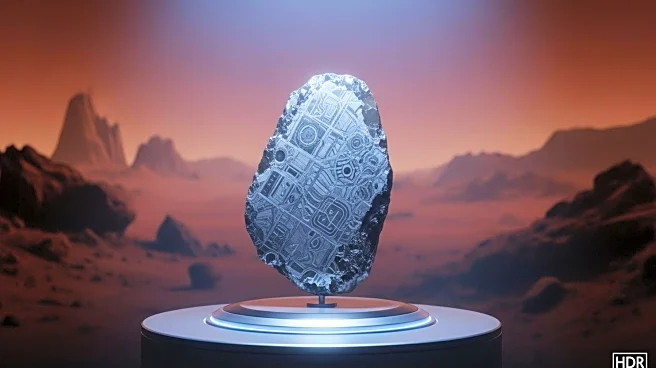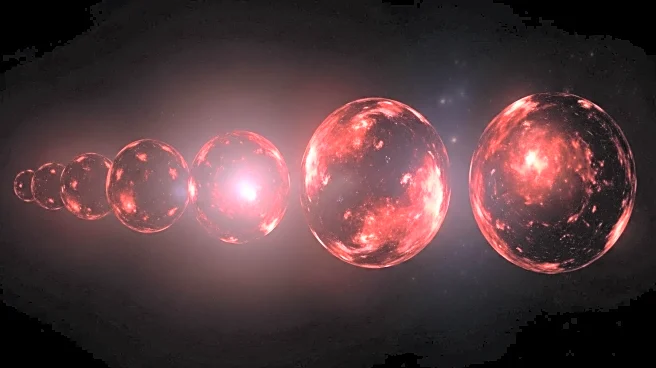What's Happening?
NASA's Perseverance rover, currently exploring Mars, has captured an image of a rock resembling a turtle head. The photograph was taken on August 31, during the rover's mission on the Martian surface. Perseverance, equipped with the SHERLOC instrument, uses ultraviolet light to investigate surface materials and textures. The rover has been traversing the Jezero Crater since its landing in February 2021, aiming to uncover signs of ancient life and understand Mars' geological history. The turtle-shaped rock was photographed using the SHERLOC-WATSON camera system, which aids researchers in analyzing surface patterns and geological formations.
Why It's Important?
The discovery of unique rock formations on Mars contributes to the understanding of the planet's geological history and environmental conditions. The Perseverance rover's mission is crucial for identifying potential signs of ancient life, which could have significant implications for astrobiology and the search for extraterrestrial life. The rover's ability to capture high-resolution images and analyze surface materials enhances scientific knowledge about Mars, aiding future exploration missions. The findings from Perseverance's mission may influence public interest and investment in space exploration, impacting scientific research and technological advancements.
